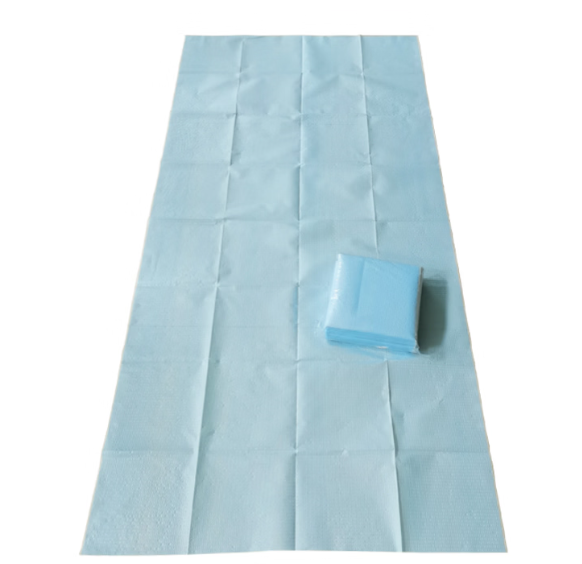medical stretcher sheet

Buy Besco Medical Stretcher Sheet, Besco medical stretcher sheet is a protective cover for stretchers and other medical equipment, designed to provide a hygienic barrier, absorb fluids, and protect equipment from contamination. These sheets can be either disposable, made from tissue and a fluid-resistant poly-back material for single use, or reusable, made from materials like nonwoven fabric or cotton blends. They come in various types, including flat, fitted, and contoured designs, to ensure a secure and comfortable fit on the stretcher, reducing slippage and enhancing patient comfort.
Types of Stretcher Sheets
Disposable stretcher sheets:
These are single-use sheets, typically made from a combination of absorbent tissue and a waterproof polyethylene (poly) layer. They are used to prevent cross-contamination and reduce cleanup time in various medical settings.
Reusable stretcher sheets:
These are made from durable, non-woven fabrics or fabric blends designed to be laundered and reused. They offer a softer, more comfortable feel for the patient while still providing fluid resistance and protection from contamination.
Key Features
Fluid resistance:
Both disposable and reusable sheets often feature fluid-resistant or fluid-impervious properties to prevent body fluids from reaching the stretcher's mattress.
Comfort:
Sheets are designed to be soft and comfortable for the patient, with some reusable options offering a linen-like feel.
Fit:
Sheets can be flat, fitted with elastic edges, or contoured to snugly fit the stretcher, preventing bunching and slippage during patient movement.
Patient comfort:
The right sheet can prevent patient discomfort by providing a smooth, stable surface and protecting sensitive skin from harsh surfaces.
Protection:
They act as a protective barrier for the patient and equipment, reducing the risk of cross-contamination in environments with high fluid exposure, such as emergency rooms or surgical centers.
To use a medical stretcher sheet, position the patient, then slide a sheet underneath them using a rolling or unravelling method to create a smooth surface for movement. For moving the patient, grip the sheet at their shoulders and hips, stand back, and pull the sheet to transfer the patient without rolling them, ensuring the sheet moves with them from head to heels. After the transfer, remove the sheet by pulling it away from the patient.
Steps to Position the Stretcher Sheet
Identify the Patient's Movement Direction: Ensure the sheet is oriented correctly for easy sliding, with arrows (if present) pointing in the intended direction of patient movement.
Choose a Method:
Rolling Method: With one or two caregivers, turn the patient towards you and roll the sheet underneath them from the back.
Unravelling Method: Place the sheet on the bed, fold it, and then have one person stabilize the folded end while the other unrolls it under the patient.
Ensure Full Coverage: Position the sheet so it covers the patient's entire body from head to heels to prevent rolling and ensure a smooth glide.
Steps to Transfer the Patient
Communicate and Position: Inform the patient of the transfer and instruct them to hug themselves to keep their arms and legs in.
Provide Support: Have one person provide tension on the sheet from the opposite side of the transfer.
Transfer the Patient: On a signal, have two people pull on the ends of the sheet to slide the patient in the direction of the arrows.
Maintain Support: The caregivers should transfer their weight backward to slide the patient.
Steps to Remove the Sheet
Pull Gently: Walk down the length of the bed or stretcher.
Remove the Sheet: Pull the sheet down and away from the patient, allowing it to come out from underneath them without moving the patient.
Important Considerations
Patient Comfort:
Always prioritize the patient's comfort and safety by communicating with them throughout the process.
Body Mechanics:
Use good body mechanics by transferring your weight backward to reduce strain.
Clinical Judgement:
Use clinical judgment regarding the specific patient's condition, especially with injuries, to ensure safety.

 Send Email
Send Email